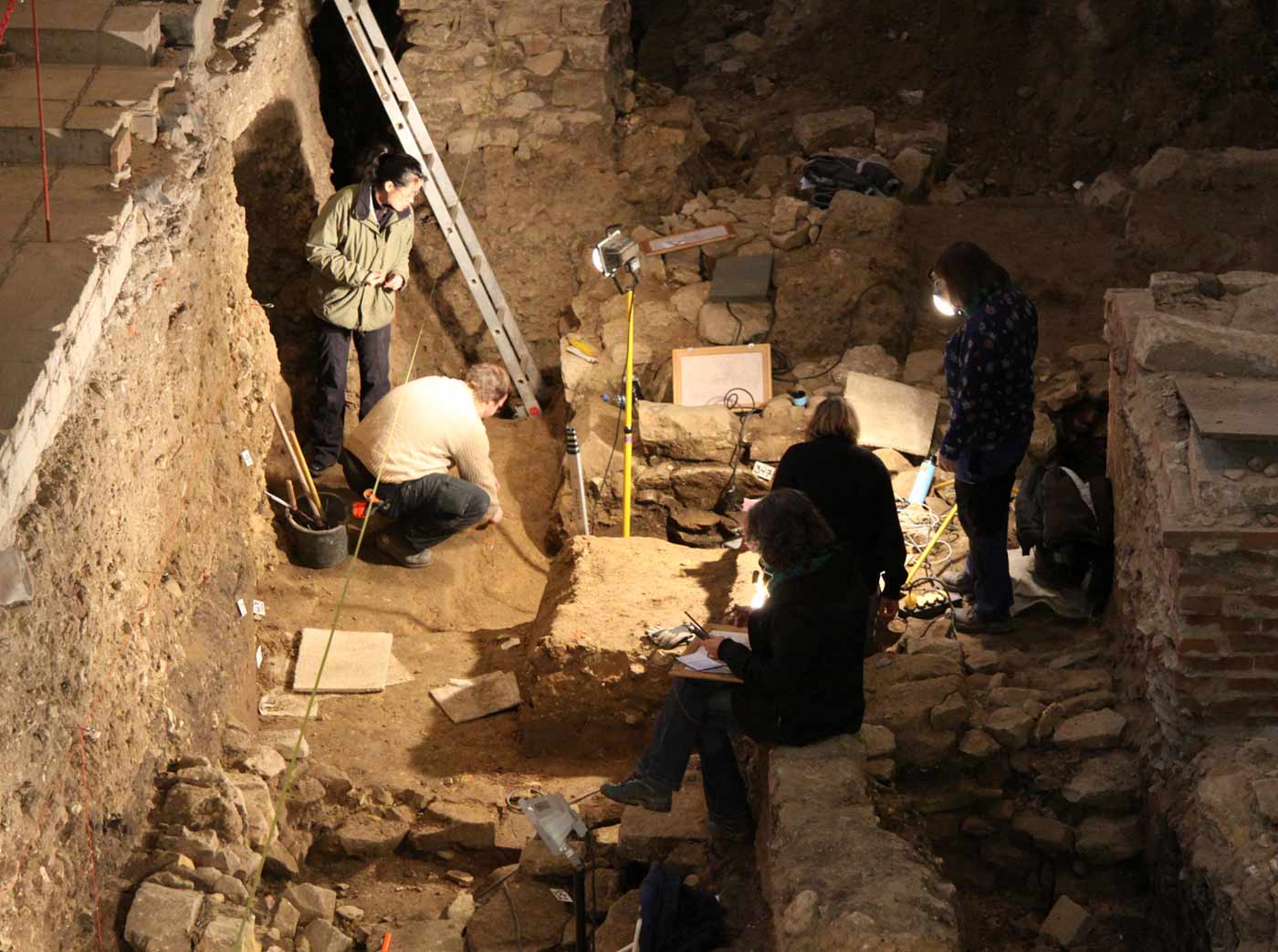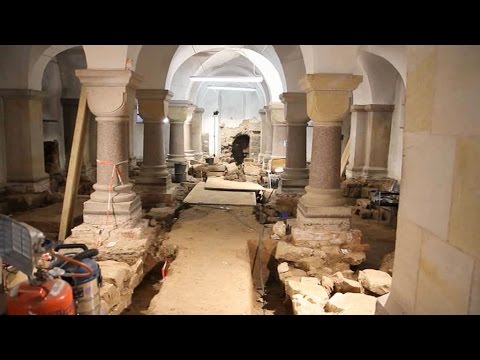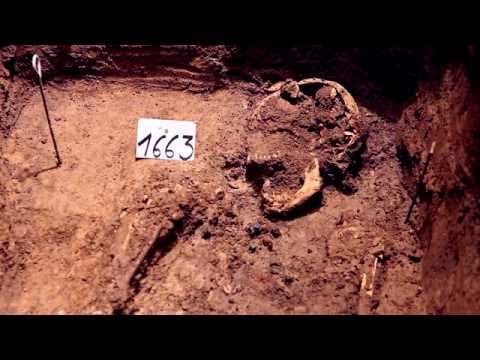Spectacular archaeological finds at Hildesheim Cathedral
The extensive renovation and remodelling of Hildesheim Cathedral gave the architects, including the Director of Church Heritage Conservation and Diocesan Curator (up until 2013), Professor Karl Bernhard Kruse, and Excavation Director Dr. Helmut Brandorff, the opportunity to carry out extensive, in-depth excavations and research. The explorers came across some surprising discoveries and were also able to prove long-held theses.
The archaeologists made their first sensational find shortly after the church had been closed for works: in April 2010, they exposed Hildesheim Cathedral’s most ancient walls in the east choir. The remains of the foundations carried them 1200 years back in time to when the first Christians from Saxony gathered to worship together. Even though the stones date from the time of Louis the Pious, who is attributed with founding the Diocese of Hildesheim, the researchers’ findings have nonetheless dispelled one part of the legend surrounding the church’s origins, since they also found pieces of pottery that were much older. The site was, therefore, already inhabited when Louis arrived. The findings were not, however, able to tarnish the faith in the story of the church’s origins, which is part and parcel of the history of the Diocese of Hildesheim, nor decrease the anticipation ahead of the 1200-year diocesan jubilee. Ultimately, the findings do not provide evidence to contradict the traditional legend that, following a life-changing experience and the miracle of the rosebush, the son of Emperor Charlemagne founded his new diocese on this exact spot, and that the ancient history of the Diocese of Hildesheim then began.
Archaeologists discover the remains of Gunthar’s cathedral
In autumn 2010, the researchers found around 40 graves from the 9th Century in the excavated Hildesheim Cathedral. Three skeletons were recovered in their entirety, along with numerous bones. “We had no idea that this burial ground was here until now,” explained Kruse at the time. Various bone fragments were then taken to the laboratory for more detailed examinations.
A further startling discovery was made at the start of 2011: underneath the current St. Antonius church next to the Cathedral, they came across the remains of the Gunthar cathedral, dating from 825 AD. Gunthar was the first bishop of Hildesheim (tenure from 815-835) and it was he who built the first cathedral church on the cathedral hill. Following the founding of the diocese, the only building initially erected on the site was a Lady chapel – after Mary is said to have identified this as the place for Louis’ new diocese by means of the rose miracle. Additional discoveries included cloister walls from the Carolingian period, as well as graves from the 17th to 19th centuries. Again, around 40 dead were uncovered. Kruse stated confidently that “not only priests were interred here, but all those who lived in the cathedral grounds”.
The graves discovered as time went on contained not only the mortal remains of the dead, but also the remains of clothing, shoes, jewellery and other objects. One especially poignant find was the grave of a young woman with a splendid necklace of glass beads and a knife. She had been alive around 800 AD. The archaeologists named her “Hilde”. Hers was one of the few graves in which the dead person was in possession of personal effects for their final journey.
The origins of the city and diocese lie in the cathedral grounds
The excavations were the fulfilment of a dream for Professor Karl Bernhard Kruse, even if he and his team never had long to carry out their work between the various renovation works. Kruse had always defended the theory that the cathedral grounds hid clues as to the true history of the city and Diocese of Hildesheim. He was now able to gather solid evidence in his hands showing that both the Diocese and Christian life in the region had their beginnings on the cathedral hill.
Mixed in with the sense of delight at the opportunity for excavating and at the valuable finds and discoveries, there was also a feeling of melancholy – not only because the time window for the archaeologists was, of course, a narrow one, and a wealth of finds disappeared again under new ground. The lodestone of the Diocese of Hildesheim, Bishop Bernward of all people, thwarted the builders’ plans: on the eastern side, next to the Joseph Godehard House, the archaeologists found the remains of the approximately 1000-year-old Bernward wall. The experts knew of the existence of this wall. What was surprising, however, was the extent and well-preserved nature of the circular wall that Bernward had instructed to be built around the cathedral precinct. Such a precious treasure had to be preserved, of course – it will be integrated into the new cathedral museum that is due to open in the spring of 2015.
The archaeologists didn’t just prove successful on the ground, or rather underneath the earlier ground level, but also in an unexpected and higher place: the remodelling work for the new cathedral museum brought to light a Gothic rose window. The perfectly proportioned window dates from the 11th Century, when the Laurentius chapel was extended, and features perfect proportions. Light would fall through the window into the great hall of the chapel, which the canons used as a scriptorium. The remains of an altar were found underneath the rose window. Yet the window had been walled up as long ago as the 15th Century. For Kruse, this find was one of the many archaeological strokes of luck during the renovation of Hildesheim Cathedral: “It is a unique testimony to the Gothic architecture in our Romanesque cathedral”. Future visitors to the cathedral museum will be able to equally admire the stone rose window and the immeasurable treasure hoard of mediaeval and contemporary art that the museum houses.





